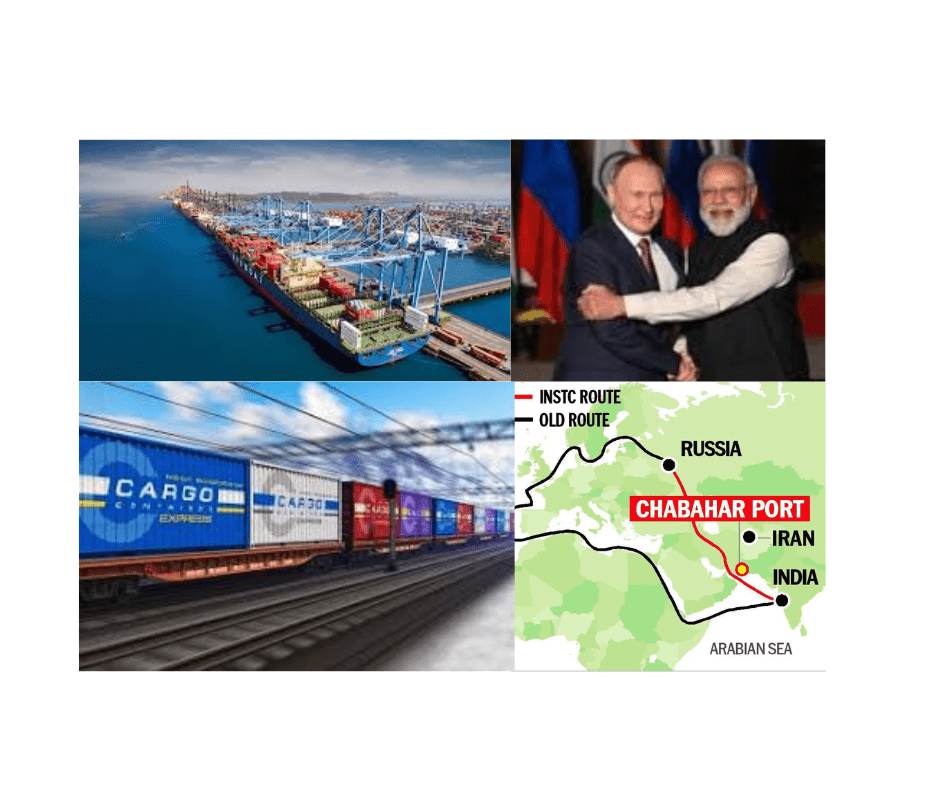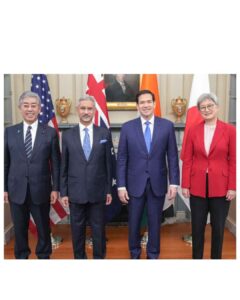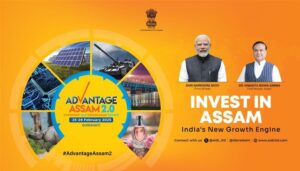
INSTC
Introduction
The International North-South Transport Corridor (INSTC) is a multi-modal network of ship, rail, and road routes designed to facilitate the movement of goods between India, Iran, Russia, Europe, and Central Asia. Launched in 2000, the corridor aims to reduce transport costs and time, enhancing trade connectivity among the member countries. Stretching approximately 7,200 kilometers, the INSTC is envisioned as a game-changer in regional trade dynamics, offering an alternative to the traditional Suez Canal route. By providing a shorter and more efficient route for transporting goods, the INSTC has the potential to boost economic growth, strengthen regional cooperation, and increase the competitiveness of participating nations in the global market.
Background
The idea of the International North-South Transport Corridor (INSTC) was conceived in the late 1990s as a strategic initiative to enhance trade links between India, Russia, and Iran, bypassing the traditional maritime routes through the Suez Canal. The initiative was formalized with the signing of an agreement between India, Iran, and Russia in September 2000 in St. Petersburg, Russia.
Since its inception, the INSTC has attracted several other countries interested in improving their trade connectivity. Azerbaijan, Armenia, Kazakhstan, Kyrgyzstan, Tajikistan, Turkey, Ukraine, Belarus, Oman, and Syria have joined the corridor, expanding its reach and impact.
Objectives and Goals
The International North-South Transport Corridor (INSTC) was established with a set of clear and strategic objectives aimed at enhancing regional connectivity and economic cooperation. The primary goals of the corridor can be summarized as follows:
- Shorter Transit Routes: The INSTC provides a shorter and more direct route for transporting goods between South Asia, Central Asia, Russia, and Europe. This significantly reduces the distance compared to traditional maritime routes via the Suez Canal.
- Cost Efficiency: By shortening the transit routes, the corridor aims to reduce transportation costs, making trade more economical for businesses and boosting the competitiveness of goods in international markets.
- Regional Integration: The INSTC seeks to enhance trade connectivity between member countries, facilitating smoother and more efficient movement of goods. This fosters regional economic integration and cooperation.
- Trade Facilitation: By improving transport infrastructure and streamlining customs procedures, the corridor aims to simplify and expedite trade processes, reducing administrative bottlenecks.
- Investment in Infrastructure: The corridor promotes significant investments in transportation infrastructure, including ports, railways, and road networks. This infrastructure development spurs economic growth and creates job opportunities in member countries.
- Boost to Local Economies: Enhanced connectivity leads to increased trade volumes, which in turn stimulates local economies and contributes to overall economic development.
- Alternative to Traditional Routes: The INSTC offers an alternative to the conventional Suez Canal route, providing a strategic option for diversifying trade routes. This reduces dependency on a single corridor and mitigates risks associated with geopolitical uncertainties or disruptions in any one route.
- Increased Resilience: By offering multiple routes and modes of transport, the corridor increases the resilience of supply chains, ensuring more reliable and stable trade flows.
- Collaborative Efforts: The corridor fosters collaboration among member countries, enhancing political and economic ties. This cooperation can contribute to regional stability and peace.
- Shared Benefits: By promoting mutual economic benefits, the INSTC encourages member countries to work together towards common goals, reducing potential conflicts and fostering a sense of regional community.
- Eco-Friendly Transport: The corridor supports the use of more environmentally friendly modes of transport, such as rail and inland waterways, reducing the carbon footprint of trade activities.
- Sustainable Development: By integrating sustainability principles into its infrastructure projects, the INSTC aims to promote sustainable development practices among member countries.
INSTC Trade Routes
The International North-South Transport Corridor (INSTC) is designed to provide an efficient and cost-effective transportation link between South Asia, Central Asia, Russia, and Europe. The corridor comprises a multi-modal network of ship, rail, and road routes, connecting key cities and ports across the member countries.
Primary Route:
The primary route begins in Mumbai, India. From Mumbai, goods are transported via the Arabian Sea to the Iranian port of Bandar Abbas from where goods are transported by road or rail across Iran to the Caspian Sea port of Anzali. Goods are shipped across the Caspian Sea to the Russian port of Astrakhan. From Astrakhan, goods are transported via rail to various destinations in Russia, and further onward to Europe.
Alternative Routes:
- Chabahar Route: Another significant route involves the Chabahar Port in Iran, providing an additional entry point to the corridor, particularly for goods from India and Southeast Asia.
- Central Asian Connections: The corridor also includes connections through Central Asian countries such as Kazakhstan, Turkmenistan, and Azerbaijan, providing additional flexibility and access points.
The route and infrastructure of the INSTC are designed to provide a robust and flexible transport network, capable of handling a diverse range of goods and accommodating the varying needs of member countries. By leveraging multi-modal transport options and investing in critical infrastructure, the INSTC aims to become a key corridor for regional and global trade.
INSTC: India’s Strategic Gateway to Eurasian Trade
In a historic development, Russia has dispatched two trains loaded with coal to India through the International North-South Transport Corridor (INSTC). This multi-modal route, connecting Russia to India via Iran, spans approximately 7,200 kilometers (4,500 miles) from St. Petersburg to Mumbai. This achievement marks a significant milestone in the utilization of the INSTC, highlighting its potential to revolutionize trade between the two nations.
The INSTC is designed to provide a faster, cost-effective alternative to traditional maritime routes such as the Suez Canal. The corridor leverages a combination of rail, road, and sea transport to facilitate the smooth transit of goods. Key nodes in the route include the Iranian port of Chabahar, which India recently took over for an initial ten-year period, further strengthening the corridor’s operational capabilities.
Strategic and Economic Importance
The timing of this development is crucial, given the geopolitical landscape shaped by Western sanctions on Russia following the Ukraine conflict. With restricted access to European markets, Russia is shifting its trade focus towards Asia and the Middle East. The INSTC plays a pivotal role in this shift, offering Russia a viable route to maintain and potentially expand its trade activities.
For India, the INSTC is more than just an alternative trade route; it is a strategic asset in its quest for greater regional connectivity and economic influence. The corridor provides Indian traders with efficient access to Central Asia, Iran, Russia, Azerbaijan, and the Baltic and Nordic countries. This expanded access can drive significant economic growth by opening new markets and reducing transport costs.
Benefits to India’s Trade
The I NSTC’s development is expected to deliver multiple benefits for India’s trade landscape:
- Energy Security: The corridor facilitates easier and more cost-effective sourcing of energy from Central Asian countries. This is particularly relevant given India’s substantial energy imports via traditional routes like the Red Sea and the Strait of Hormuz, which are prone to geopolitical disruptions.
- Cost-Effective Imports: India has ramped up imports of coking and thermal coal from Russia, driven by the lower prices compared to other suppliers like Australia. The INSTC’s reduced transit time and cost efficiency further enhance these economic advantages.
- Alternative to Suez Canal: The INSTC offers a reliable alternative to the Suez Canal, which handles about 12% of global trade but is susceptible to disruptions, as seen during the 2021 blockage incident. Recent geopolitical tensions, such as the Israel-Hamas conflict and Houthi attacks on ships, underscore the need for diversified trade routes.
Recent Trade Milestones
The successful coal shipment from Russia via the INSTC is a testament to the corridor’s operational viability. India’s imports of metallurgical coal from Russia have surged three-fold in the past three years, reaching approximately 15.1 million tonnes in 2023-24. This increase is driven primarily by cost advantages, with Russian coal proving cheaper than alternatives from other regions. As a result, Russia’s share in India’s metallurgical coal imports has risen significantly, from around 8% in 2021-22 to about 21% currently.
Future Prospects
The INSTC’s successful implementation promises a new era of regional connectivity and economic collaboration. For India, the corridor not only enhances trade efficiency but also bolsters energy security and economic resilience. As infrastructure and logistical coordination improve, the corridor’s capacity to support increased trade volumes will likely grow, attracting further investment and strengthening economic ties among member countries.
Role of INSTC in Global Supply Chain
The International North-South Transport Corridor (INSTC) plays a significant role in the global supply chain by enhancing connectivity and facilitating trade between Europe, Russia, Central Asia, South Asia, and the Middle East. Here are some key roles that INSTC plays in the global supply chain:
Reducing Transportation Costs: INSTC provides a shorter and more cost-effective route for goods moving between South Asia and Europe compared to traditional sea routes through the Suez Canal. This reduces transportation costs and enhances cost-efficiency in global supply chains.
Diversifying Transport Routes: By offering an alternative route to existing maritime routes, INSTC helps diversify transport options for goods, reducing dependency on single corridors and mitigating risks associated with disruptions or geopolitical tensions in other regions.
Improving Transit Times: INSTC aims to significantly reduce transit times for goods compared to sea routes, making it more competitive for time-sensitive shipments and contributing to faster delivery times in global supply chains.
Enhancing Regional Integration: INSTC fosters economic integration and cooperation among participating countries by improving connectivity infrastructure (roads, railways, ports) and facilitating smoother cross-border trade operations. This integration strengthens regional supply chains and economic ties.
Facilitating Trade Growth: By providing a reliable and efficient transport corridor, INSTC stimulates trade growth by expanding market access and creating new opportunities for businesses across participating countries. This contributes to the overall expansion and resilience of global supply chains.
Supporting Specialized Cargo Movements: INSTC is capable of accommodating various types of cargo, including bulk commodities, perishable goods, and project cargo, thereby catering to diverse industry needs and enhancing flexibility in global supply chain logistics.
Promoting Multimodal Connectivity: INSTC integrates different modes of transport such as road, rail, and sea, offering seamless multimodal transport solutions. This integration improves efficiency, reduces transit times, and lowers costs for goods moving through the corridor.
Strategic Importance: The corridor’s strategic location and connectivity potential make it a crucial component of global supply chains, particularly in facilitating trade between Europe and Asia. Its development enhances geopolitical stability and economic cooperation across Eurasia.
Overall, INSTC’s role in the global supply chain underscores its potential to reshape trade dynamics, enhance economic integration, and promote sustainable development across the regions it connects.
Conclusion
The International North-South Transport Corridor (INSTC) emerges as a transformative initiative poised to reshape regional and global trade dynamics. By bridging Europe, Russia, Central Asia, South Asia, and the Middle East through enhanced connectivity and streamlined logistics, INSTC offers a strategic pathway for reducing transportation costs, improving transit times, and diversifying supply chain routes.
INSTC’s role extends beyond mere infrastructure development; it signifies a commitment to fostering economic integration, strengthening geopolitical ties, and promoting sustainable development across the participating regions. Through its multimodal transport options and strategic location, INSTC not only enhances trade efficiency but also supports resilience in global supply chains by offering an alternative to traditional maritime routes.
Looking ahead, the successful realization and expansion of INSTC will depend on continued collaboration among stakeholders, sustained investment in infrastructure, and overcoming logistical and geopolitical challenges. As INSTC continues to evolve, its impact on regional economies and global trade will likely grow, cementing its position as a critical artery in the interconnected landscape of international commerce.






